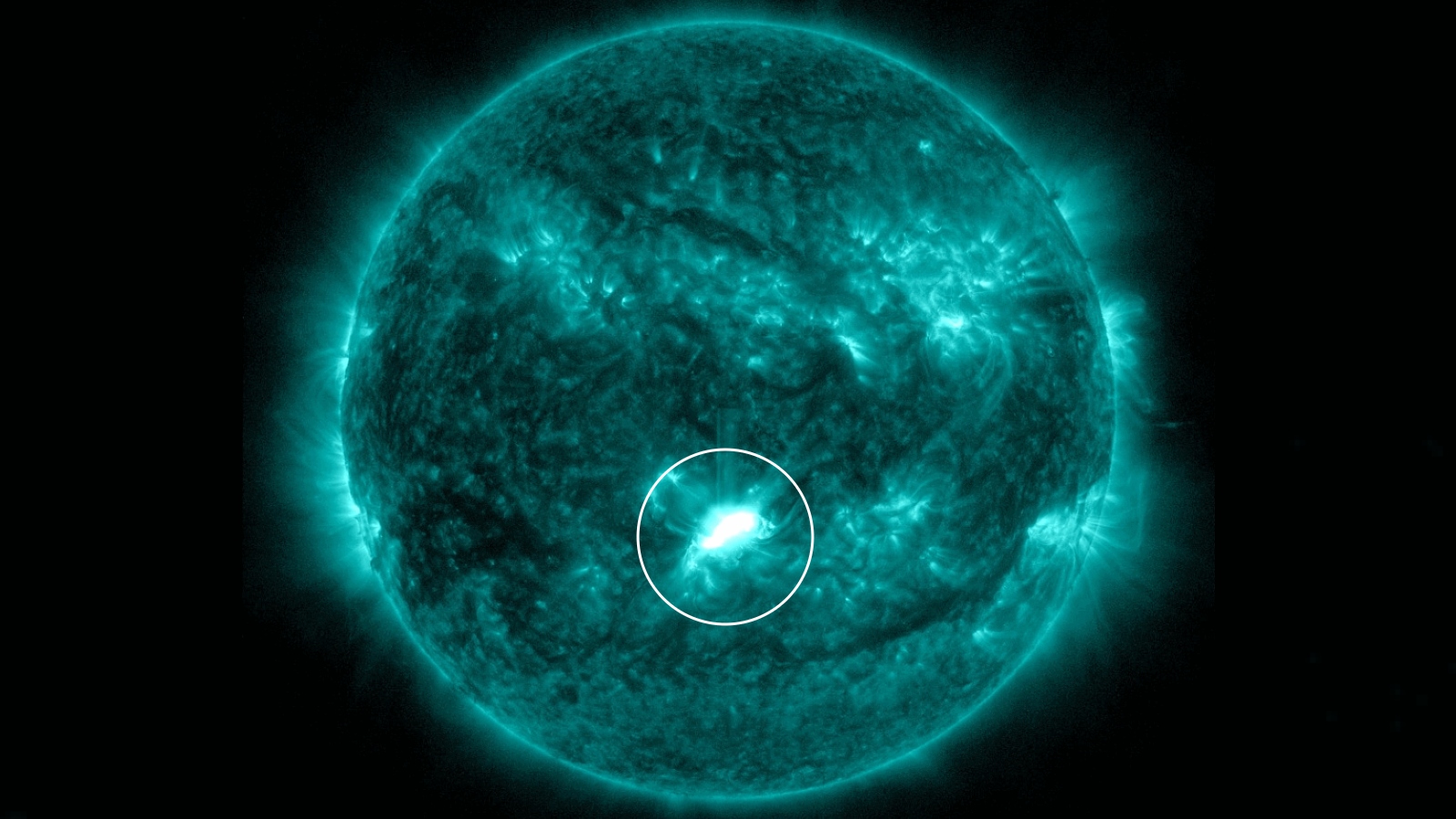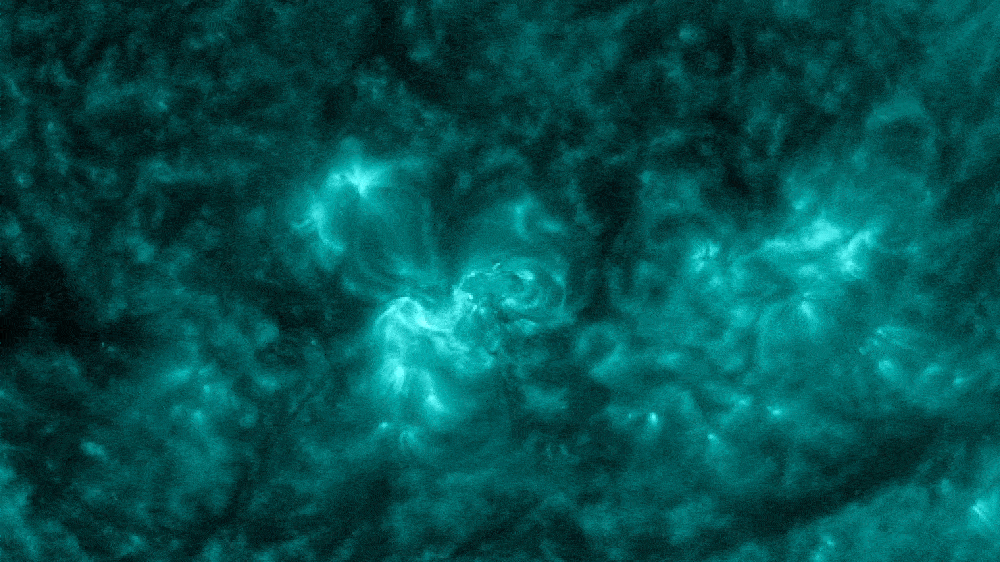'Cannibal' solar explosion likely to hit Earth today, bringing strong geomagnetic storm and widespread auroras
A recent solar explosion that almost reached "X-class" status has hurled a massive coronal mass ejection toward Earth, which will likely hit our planet and trigger a geomagnetic storm on Dec. 1.

The sun recently unleashed an "almost X-class" solar flare that was only fractionally less powerful than one of the sun's most powerful explosions. This flare has already bombarded us with radiation and unleashed a coronal mass ejection (CME) that will likely slam into Earth today (Dec. 1), resulting in strong geomagnetic storms and widespread auroras, according to the National Oceanic and Atmospheric Administration (NOAA).
Solar flares are essentially large explosions that are triggered when magnetic fields around sunspots snap and fling plasma into space. On Nov. 28, a large flare erupted from a dark patch near the sun's equator. Solar orbiters measured the flare as a 9.8 magnitude M-class, which is just below the threshold of X-class flares — the most powerful class of solar flare, Spaceweather.com reported. (Solar flare classes include A, B, C, M and X, with each class being at least 10 times more powerful than the previous one. X-class flares are the equivalent of a magnitude 10 M-class flare and above.)
The supercharged flare spat out an initial wave of solar radiation that smashed into Earth on Nov. 29 and triggered minor radio blackouts as it rattled our planet's magnetic shield, or magnetosphere, and further ionized the top part of our atmosphere, EarthSky reported.
The flare also unleashed a CME, or fast-moving cloud of magnetized plasma, which shot out of the sun at around 1.8 million mph (2.9 million km/h), according to Spaceweather.com. The trajectory of the CME suggests it is likely to hit Earth on Dec. 1, according to Spaceweather.com.
Related: 15 dazzling images of the sun

If the CME does hit Earth, it will be repelled by the magnetosphere. But the collision will temporarily weaken the magnetosphere, causing a geomagnetic storm that could trigger vibrant aurora displays that light up the night sky. The storm will likely be strong (G3 class, which is the 3rd-strongest on NOAA's 5-class scale) and will result in widespread auroras, but likely not pose a threat to satellites or ground-based infrastructure.
On its way to Earth, the CME will likely cannibalize two smaller CMEs that were spat out by a smaller flare on Nov. 27, which could power up the resulting storm, according to NOAA.
Sign up for the Live Science daily newsletter now
Get the world’s most fascinating discoveries delivered straight to your inbox.
Solar flares have become more frequent and intense throughout this year. There have already been 11 X-class flares since January — more than the last five years put together, according to SpaceWeatherLive.com.
At least three of these superpowered solar explosions have launched CMEs that have hit Earth: The first came from the first X-class flare of the year in early January; the second hit us in February and also unleashed a "solar tsunami" as it erupted; and the most recent CME exploded from an enormous sunspot 10 times wider than Earth in July.
Increasing solar activity has also been visible in other ways, including an increase in the number of sunspots peppering the solar surface and rising temperatures in Earth's upper atmosphere, which is soaking up more solar radiation than normal.
This ramp-up in activity is the result of the sun approaching the explosive peak in its roughly 11-year solar cycle, known as the solar maximum, which scientists now believe will arrive sometime next year.
Update: This article was edited on Dec. 1 to incorporate the latest forecast from NOAA.

Harry is a U.K.-based senior staff writer at Live Science. He studied marine biology at the University of Exeter before training to become a journalist. He covers a wide range of topics including space exploration, planetary science, space weather, climate change, animal behavior and paleontology. His recent work on the solar maximum won "best space submission" at the 2024 Aerospace Media Awards and was shortlisted in the "top scoop" category at the NCTJ Awards for Excellence in 2023. He also writes Live Science's weekly Earth from space series.









